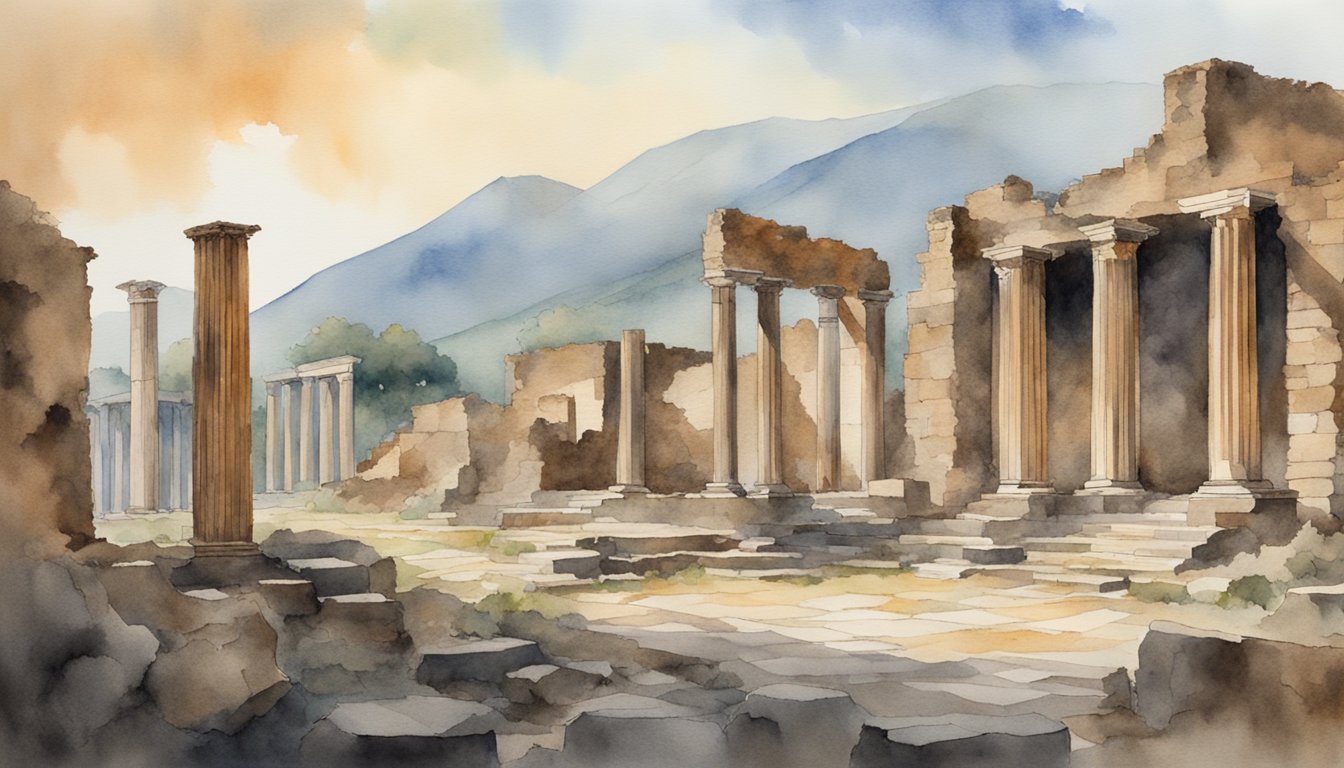Understanding Pompeii and Its Volcanic Disaster
Historical Context of Pompeii
Pompeii was a thriving Roman city located in the Campania region of Southern Italy, near the Bay of Naples. Before becoming a part of the Roman Empire, it was originally settled by the Etruscans and later the Latin-speaking inhabitants. However, during the 5th and 4th centuries BCE, the indigenous tribe known as the Samnites, who spoke the Oscan language, took control of the area southwest corner of Pompeii.
The city thrived under the Roman Empire, flourishing as a resort city with wealthy residents and visitors. Its strategic location offered easy access to other parts of the empire, and the city’s architecture and artifacts provide evidence of its prosperity. Residents were protected by city walls, which later expanded due to growing population.
Archaeological investigations of Pompeii have uncovered remarkably well-preserved ruins, making it one of the richest archaeological sites in the world. The city’s rapid burial, following the volcanic eruption of Mount Vesuvius, is responsible for this exceptional state of preservation.
Mount Vesuvius and the Eruption of 79 AD
Mount Vesuvius, a stratovolcano, is part of the Campanian Volcanic Arc and has a long history of explosive eruptions, making it one of the world’s most dangerous volcanoes. Its most infamous eruption occurred in 79 CE, affecting the cities of Pompeii and Herculaneum.
The eruption began with a massive cloud of volcanic gases, ash, and pumice towering over the region. Pliny the Younger, a Roman author, described the catastrophic event in detailed letters. Buildings collapsed under the weight of volcanic debris and ash, burying Pompeii in at least 19 feet (6 meters) of volcanic material. The eruption resulted in the deaths of thousands of inhabitants and buried the cities so quickly that the ruins remained undiscovered for centuries.
In the 16th century, initial discoveries of the buried city were made, and by the mid-18th century, organized excavations began. The unearthed ruins of Pompeii offer invaluable insights into Roman daily life, making it a significant site for historians and archaeologists studying the ancient world.
Pompeii’s Legacy and Archaeological Revelations

Exploring the Ruins: Excavation and Preservation
Pompeii, an ancient city in southern Italy, is a UNESCO World Heritage site due to its remarkable preservation under volcanic ash from the Mt. Vesuvius eruption in AD 79. Excavations started in the 18th century but have continued until today, with some frescoes recently discovered.
The city had a complex water system with fountains and public baths; evidence of bronze age settlements can be found at its gates. The Pompeii Forum, surrounded by shops and the Basilica, was the central marketplace. The arena, or amphitheatre, was home to gladiator battles, while the Temple of Venus was the patron deity’s shrine.
Preservation of wall paintings and frescoes has been a significant focus of the excavations. Artifacts uncovered range from everyday items such as wine amphoras to sculptures of gods, including Hercules.
Life in Pompeii: Society and Daily Living
The city’s population was diverse, with people from differing social statuses and professions living in villas and modest homes. Food, such as fish and grapes, was primarily provided by the fertile soil surrounding the city and its proximity to the sea, resulting in a variety of food options for the citizens. Wine was an essential part of Pompeii’s commerce, as evidenced by vines discovered throughout the city.
One fascinating aspect of Pompeii’s society was its openness to discussing and embracing sexuality. Artworks found on walls include images of Venus, the goddess of love, and scenes from popular literature including Ovid’s Metamorphoses. Many wealthy homes featured elaborate frescoes with scenes depicting love, life, and mythological figures such as Helen of Troy, as seen in the recently discovered paintings.
Pliny the Elder, a Roman author and philosopher, was an important historical figure who died during the volcanic eruption while observing the massive surges of ashes and hot gases, later known as pyroclastic flows.
Today, Pompeii is a significant part of archaeological research, continuously revealing new insights into the lives of the people who once lived there. Each new discovery adds another layer of information to our understanding of the ancient world.

